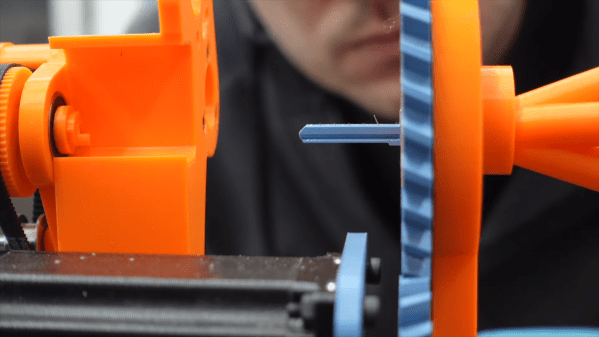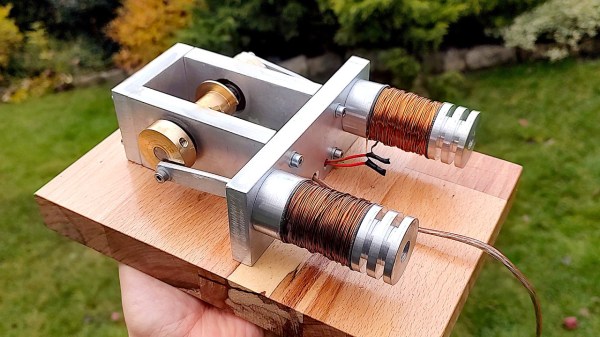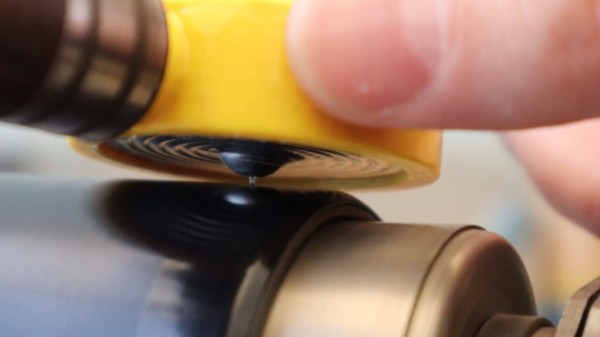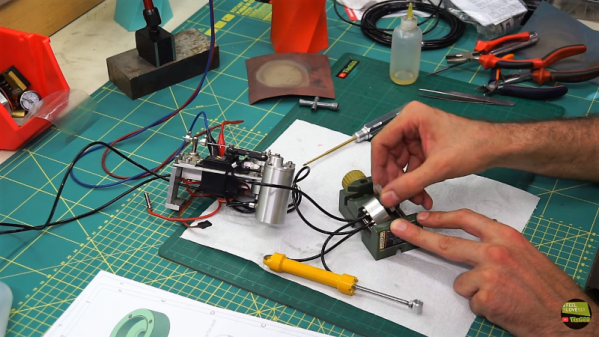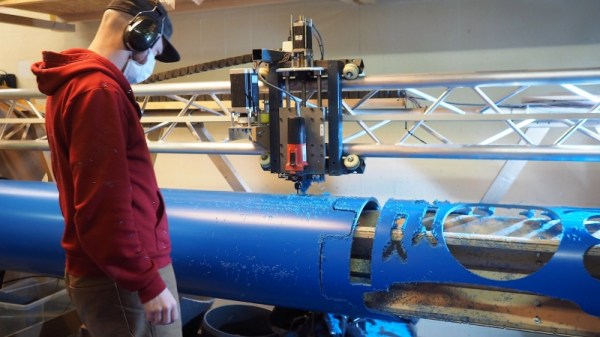Begun, the Spectrum Wars have. First, it was AM radio getting the shaft (last item) and being yanked out of cars for the supposed impossibility of peaceful coexistence with rolling broadband EMI generators EVs. That battle has gone back and forth for the last year or two here in the US, with lawmakers even getting involved at one point (first item) by threatening legislation to make terrestrial AM radio available in every car sold. We’re honestly not sure where it stands now in the US, but now the Swiss seem to be entering the fray a little up the dial by turning off all their analog FM broadcasts at the end of the year. This doesn’t seem to be related to interference — after all, no static at all — but more from the standpoint of reclaiming spectrum that’s no longer turning a profit. There are apparently very few analog FM receivers in use in Switzerland anymore, with everyone having switched to DAB+ or streaming to get their music fix, and keeping FM transmitters on the air isn’t cheap, so the numbers are just stacked against the analog stations. It’s hard to say if this is a portent of things to come in other parts of the world, but it certainly doesn’t bode well for the overall health of terrestrial broadcasting. “First they came for AM radio, and I did nothing because I’m not old enough to listen to AM radio. But then they came for analog FM radio, and when I lost my album-oriented classic rock station, I realized that I’m actually old enough for AM.”
cylinder14 Articles
This Robot Picks Locks, If You’re Very Patient
We all know the Hollywood trope of picking a lock with a paperclip, and while it certainly is doable, most reputable locks require slightly more sophisticated tools to pick effectively. That’s not to say that wire is off the table for locksports, though, as this cool lock-picking robot demonstrates.
The basics behind [Sparks and Code]’s design are pretty simple. Locks are picked by pushing pins up inside the cylinder until they line up with the shear plane, allowing the cylinder to turn. Normally this is done a pin at a time with a specialized tool and with a slight bit of torque on the cylinder. Here, tough, thin, stiff wires passing through tiny holes in a blade shaped to fit the keyway are used to push all the pins up at once, eliminating the need to keep tension on the cylinder to hold pins in place.
Sounds simple, but in practice, this looks like it was a nightmare. Getting five wires to fit into the keyway and guiding them to each pin wasn’t easy, nor was powering the linear actuators that slide the wires in and out. Applying torque to the lock was a chore too; even though tension isn’t needed to retain picked pins, the cylinder still needs to rotate, which means moving the whole picking assembly. But the biggest problem by far seems to be the fragility of the blade that goes into the keyway. SLA might not be the best choice here; perhaps the blade could be made from two thin pieces of aluminum with channels milled on their faces and then assembled face-to-face.
The robot works, albeit very slowly. This isn’t [Sparks and Code]’s first foray into robot lock picking. His previous version attempted to mimic how a human would pick a lock, so this is really thinking outside the box.
Continue reading “This Robot Picks Locks, If You’re Very Patient”
Machining A Reciprocating Solenoid Engine
The reciprocating engine has been all the rage for at least three centuries. The first widely adopted engine of this type was the steam engine with a piston translating linear motion into rotational motion, but the much more common version today is found in the internal combustion engine. Heat engines aren’t the only ways of performing this translation, though. While there are few practical reasons for building them, solenoid engines can still do this job as well and, like this design from [Maciej Nowak Projects], are worth building just for the aesthetics alone.
The solenoid engine is built almost completely from metal stock shaped in a machine shop, including the solenoids themselves. The build starts by making them out of aluminum rod and then winding them with the help of a drill. The next step is making the frame to hold the solenoids and the bearings for the crankshaft. To handle engine timing a custom brass shutter mechanism was made to allow a set of infrared emitter/detector pairs to send signals that control each of the solenoids. With this in place on the crankshaft and the connecting rods attached the engine is ready to run.
Even though this solenoid engine is more of a project made for its own sake, solenoid engines are quite capable of doing useful work like this engine fitted into a small car. We’ve seen some other impressive solenoid engine builds as well like this V8 from [Emiel] that was the final iteration of a series of builds from him that progressively added more solenoid pistons to an original design.
Continue reading “Machining A Reciprocating Solenoid Engine”
Reproducing A Reproducer: Servicing A Cylinder Phonograph In The Year 2021
[Jan Derogee] pulled out his phonograph the other day to hear the 100+ year old wax cylinder warble of “It’s a Long Way to Tipperary”, but couldn’t locate the reproducer — this is the small circular bit that holds the stylus and transfers the groove-driven vibrations to the center of a thin diaphragm, which vibrates into the sound horn. It’s easily the most important part of a cylinder phonograph. What do you do when you lose your reproducer? You could search ebay for a replacement, but that wouldn’t be nearly as fun as reproducing your reproducer yourself.
 Traditionally, diaphragms were made from mica or celluloid, and the Edison disk phonograph used seven layers of shellac-soaked rice paper. Reproducers typically have a Dagwood sandwich of gaskets surrounding the membrane, but they don’t have to be so convoluted to work — a single strong membrane will do just fine. Just ask [Jan], who made a new reproducer with a 3D-printed case, a hand-pulled glass stylus, and a disposable aluminum foil pan for the diaphragm.
Traditionally, diaphragms were made from mica or celluloid, and the Edison disk phonograph used seven layers of shellac-soaked rice paper. Reproducers typically have a Dagwood sandwich of gaskets surrounding the membrane, but they don’t have to be so convoluted to work — a single strong membrane will do just fine. Just ask [Jan], who made a new reproducer with a 3D-printed case, a hand-pulled glass stylus, and a disposable aluminum foil pan for the diaphragm.
It’s difficult for us to say which part looks more fun — stretching the glass shard over a gas kitchen stove with the flame focused by a stack of wrench sockets, or cutting up a bicycle inner tube and using a car jack to press the aluminum into shape against a 3D-printed mold. The whole video is awesome and you can check it out after the break.
As [Jan] notes in the video and on the project site, the glass stylus should really be made from borosilicate because it’s harder than regular soda lime glass (that’s why they often make vaccine vials out of it). Regular glass will work and takes much less time and gas to reach the pull-able stage, so that’s what [Jan] used in the video, but it will wear out much more quickly. Fortunately, this was a temporary solution, because as soon as [Jan] made a replacement, the missing reproducer showed up.
Continue reading “Reproducing A Reproducer: Servicing A Cylinder Phonograph In The Year 2021”
Finely Machined Valve Controls Miniature RC Hydraulics
Hydraulic components are the industrial power transmission version of LEGO. Pumps, cylinders, valves – pretty much everything is standardized, and fitting out a working system is a matter of picking the right parts and just plumbing everything together. That’s fine if you want to build an excavator or a dump truck, but what if you want to scale things down?
Miniature hydraulic systems need miniature components, of which this homebrew hydraulic valve made by [TinC33] is a great example. (Video embedded below.) If you’re curious about why anyone would need these, check out the tiny hydraulic cylinders he built a while back, wherein you’ll learn that miniature RC snowplows are a thing. The video below starts with a brief but clear explanation about how hydraulic circuits work, as well as an explanation of the rotary dual-action proportional valve he designed. All the parts are machined by hand in the lathe from aluminum and brass stock. The machining operations are worth watching, but if you’re not into such things, skip to final assembly and testing at 13:44. The valve works well, providing very fine control of the cylinder and excellent load holding, and there’s not a leak to be seen. Impressive.
[TinC33] finishes the video with a tease of a design for multiple valves in a single body. That one looks like it might be an interesting machining challenge, and one we’d love to see.
Thanks to [mgsouth] for the tip.
CNC Machine Rolls Up An Axis To Machine PVC Pipe
Whether it’s wood, metal, plastic, or otherwise, when it comes to obtaining materials for your builds, you have two choices: buy new stock, or scrounge what you can. Fresh virgin materials are often easier to work with, but it’s satisfying to get useful stock from unexpected sources.
This CNC router for PVC pipe is a great example of harvesting materials from an unusual source. [Christophe Machet] undertook his “Pipeline Project” specifically to explore what can be made from large-diameter PVC pipe, of the type commonly used for sewers and other drains. It’s basically a standard – albeit large-format – three-axis CNC router with one axis wrapped into a cylinder. The pipe is slipped around a sacrificial mandrel and loaded into the machine, where it rotates under what looks like a piece of truss from an antenna tower. The spindle seems a bit small, but it obviously gets the job done; luckily the truss has the strength and stiffness to carry a much bigger spindle if that becomes necessary in the future.
The video below shows the machine carving up parts for some lovely chairs. [Christophe] tells us that some manual post-forming with a heat gun is required for features like the arms of the chairs, but we could see automating that step too. We like the look of the pieces that come off this machine, and how [Christophe] saw a way to adapt one axis for cylindrical work. He submitted this project for the 2019 Hackaday Prize; have you submitted your entry yet?
Continue reading “CNC Machine Rolls Up An Axis To Machine PVC Pipe”
Hacked Electric Toothbrush Defeats Locks With Ease
The movie version of lockpicking tends to emphasize the meticulous, delicate image of the craft. The hero or villain takes out a slim wallet of fine tools, applies them with skill and precision, and quickly defeats the lock. They make it look easy, and while the image isn’t far from reality, there are other ways to pick a lock.
This expedient electric toothbrush lockpick is a surprisingly effective example of the more brute force approach to lockpicking. As [Jolly Peanut] explains, pin tumbler locks work by lining up each pin with the shear line of the cylinder, which allows the lock to turn. This can be accomplished a pin at a time with picks, or en masse by vibrating the pins until they randomly line up with the shear line just long enough for the lock to turn. A locksmith might use a purpose-built tool for the job, but a simple battery-powered electric toothbrush works in a pinch too. [Jolly Peanut] removed the usual business end of the brush to reveal a metal drive rod that vibrates at a high frequency. The rod was slimmed down by a little grinding to fit into the keyway of a lock, and with the application of a little torque, the vibration is enough to pop the pins into the right position. He tries it out on several locks in the video below, and it only takes a few seconds each time.
Such brute force methods have their drawbacks, of course. They’re not exactly subtle, and the noise they create may attract unwanted attention. In that case, hone your manual lockpicking skills with a giant 3D-printed see-through lock.
Continue reading “Hacked Electric Toothbrush Defeats Locks With Ease”


